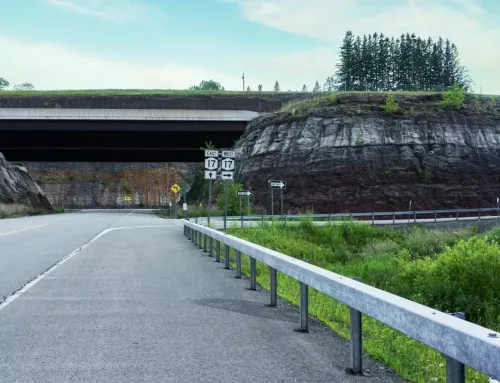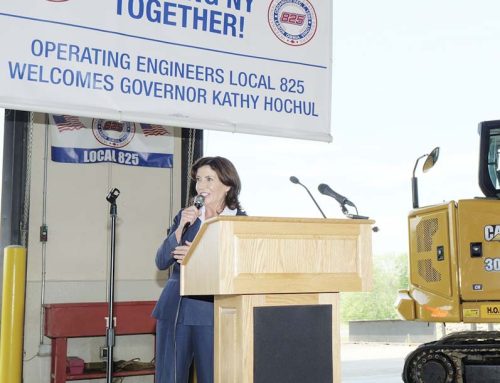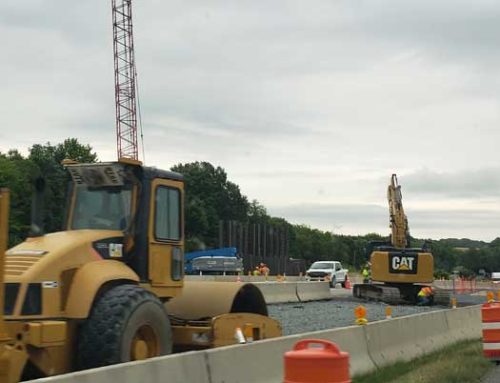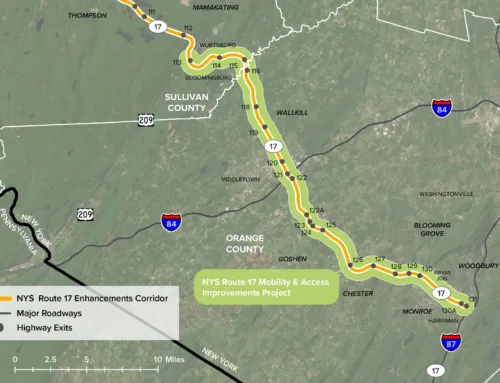By James Walsh
ALBANY — A contingent of Hudson Valley economic development advocates and labor leaders converged on the state Capitol on Wednesday, pushing for the addition of lanes to Route 17 to meet the rapidly expanding growth of tourist attractions and other businesses along the east-west corridor.
The coalition seeks $500 million to add a third lane in both directions between Harriman and the Monticello area. While there are no assurances from the state, advocates can argue that the sum represents a mere 1.6 percent of an anticipated Department of Transportation five-year statewide capital plan in 2020, said Michael Makarski, of the Engineers Labor-Employer Cooperative, Local 825.
The coalition, called 17-Forward-86, is seeking $100 million annually for five years beginning in March 2020. The state has already allocated $150 million for the ongoing reconfiguration of Woodbury’s Exit 131, designed in part to ease traffic onto the Thruway from Route 32.
A long parade of speakers, including state and local officials representing the region, said the highway expansion is long overdue. It is a quality-of-life issue, said Nancy Proyect, president of the Orange County Citizens Foundation, relieving traffic on secondary roads by motorists avoiding the weekend Route 17 rush. And it’s largely accomplishable, she said, within the shoulders and median of the existing highway.
Assembly members Aileen Gunther and Jonathan Jacobson see the expansion boosting job opportunities, and state Sen. Jen Metzger, chairwoman of the Agriculture Committee, sees it benefiting agritourism as well as the overall economy by making the region more easily accessible.
“This is a project critical to our economy,” Metzger said.
Lynn Cione, president of the Orange County Chamber of Commerce, recalled that when she moved to the area the first tip she got from neighbors “was don’t go east on Sundays or west on Friday nights (on Route 17). And that was 32 years ago.”
A 2013 state Transportation Corridor Study of the 47 miles between Harriman and Monticello resulted in a recommendation of a third lane between the 22-mile segment between Harriman and Route 211 in the Town of Wallkill, according to an executive summary.
“While traffic projections do not indicate the need to extend the third lane farther west,” it stated, the extension could be expanded “should travel patterns or demand change in the future.”
The coalition cites projected population increases in Orange and Sullivan counties, as well as increasing Sullivan tourism, among reasons for the state to revisit the issue.
While Legoland, which projects 1.5 million to 2 million visitors annually after it opens in 2020, and the new casino and soon-to-be completed water park near Monticello loom large in the traffic issue, that’s not the whole picture, Goshen Supervisor Douglas Bloomfield warned before the meeting.
Construction is underway for an Amy’s Kitchen plant in Goshen, which projects hiring about 700 employees to crank out more than 600,000 frozen meals daily. That’s a lot of car and truck traffic, Bloomfield said, plus another 1,300 Legoland workers at the height of the season. Three 100-room hotels and two 10,000-square-foot restaurants are also proposed in the town.
“To say I’m nervous right now would be putting it mildly,′ Bloomfield told the gathering.
Maureen Halahan, president and CEO of the Orange County Partnership, said the state-funded $5 million study of Route 17 would make the highway “shovel ready” for its conversion to Interstate 86. And while the third lanes are not necessary for that conversion, the Partnership has found that existing traffic congestion on Route 17 is the main argument residents offer when opposing commercial development.
Middletown Mayor Joseph DeStefano said two main entrances to the city are from Route 17, and that the community’s economic development is tied to the highway.
And such development, advocates said, brings affordability to the region, providing jobs and tax-paying properties. When the construction, both underway and proposed, is completed in Goshen, for example, the town expects to see its assessed property value rise to $1.2 billion from $620 million.





